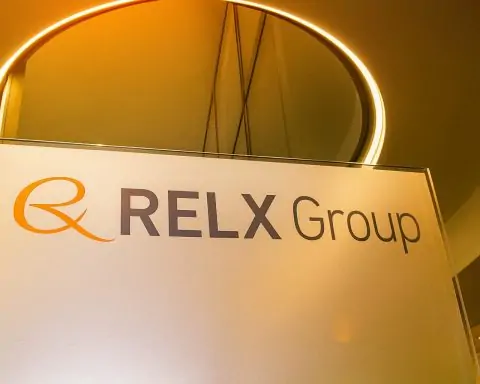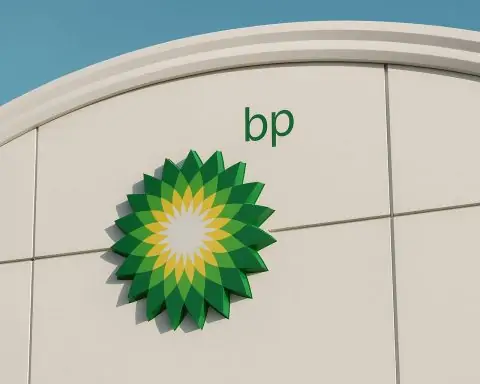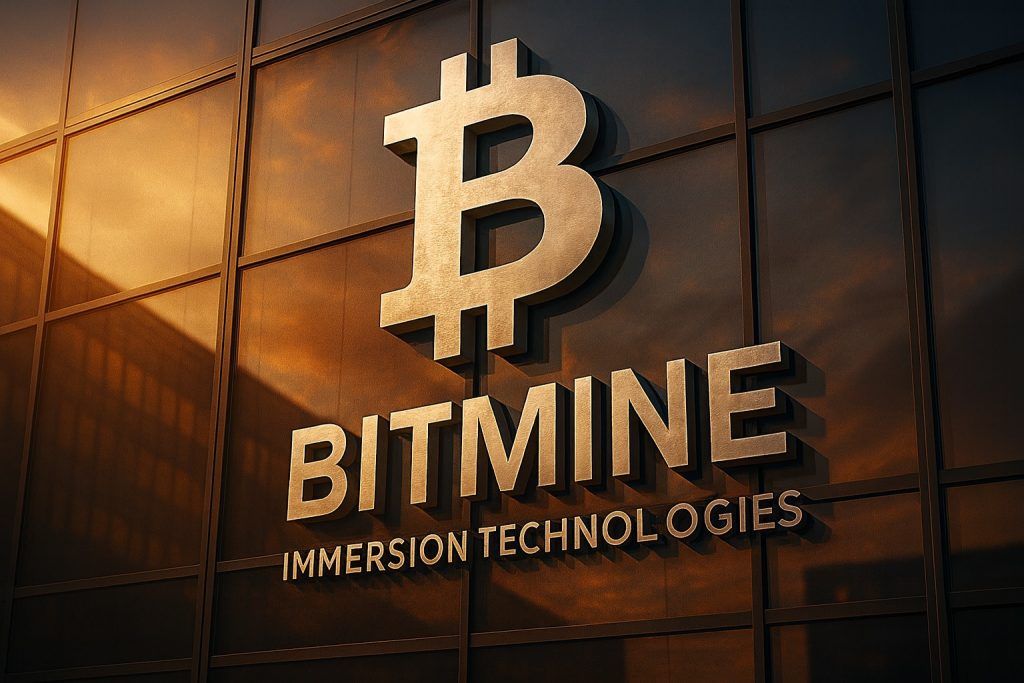- Record Rally: TSMC (NYSE: TSM) ADR reached ~$290 (briefly >$300) in early Oct 2025, up ~45% YTD [1]. Over 12 months it’s surged ~63% [2], vastly outperforming global indexes.
- Blowout Results: Preliminary Q3 FY2025 revenue ~NT$989.9 billion (~$32.5B), +30% YoY [3], beating forecasts. Management guides for ~30% annual growth.
- Market Value: Market cap ≈US$1.1 trillion (largest non-US tech firm) [4]. The stock trades around 30× trailing P/E [5] (forward ~25×) and ~15× EV/EBITDA [6], reflecting strong growth and margins.
- Analyst Sentiment: Consensus is “Moderate Buy” (avg. price target ~$333) [7]. Major banks have higher targets (Morgan Stanley, BofA, Barclays, Huatai see ~$300–330 levels) [8]. TSMC pays a small but growing dividend (recently raised to NT$0.8348/qtr, ~1.2% yield) [9].
- Financial Strength: FY2025 sales are on track to top $100 B (guidance ~+30% YoY) [10]. Q2 2025 revenue jumped +44% YoY to $30.1 B [11] with gross margins ~55%+ and net margins ~40% [12], illustrating exceptional profitability. Operating cash flow remains very strong.
- Geopolitical Risks: TSMC faces high geopolitical exposure. Taiwan flatly rejected U.S. demands for a 50/50 Taiwan–US chip production split [13]. Simultaneously, China’s military drills near Taiwan (and U.S. tech export controls on China) underscore conflict risks [14] [15].
Recent Developments and News
TSMC’s advanced fabs have driven its recent headlines. On Oct 9, 2025, TSMC announced preliminary Q3 sales of NT$989.92 B (~$32.47 B), up 30% YoY [16] – well above the market forecast. This AI-fueled demand lifted near-term guidance: management reiterated ~30% full-year growth. U.S. markets immediately reacted. By Oct 10, the ADR closed ~$280.66 [17] (a 6.4% drop on heavier volume) after a short-term technical sell-off [18], then pre-market on Oct 13 jumped to ~$294 [19] on strong sentiment.
At the same time, geopolitics grabbed headlines. Taiwan’s leaders refused U.S. calls for an equal “50/50” chip output split, insisting most capacity stay on the island [20]. TSMC has pledged massive investment in overseas fabs (over $165 B in Arizona alone) but still emphasizes 70%+ of its cutting-edge manufacturing remains in Taiwan [21]. Chinese military exercises near Taiwan (combined with the fact ~97% of Taiwan’s fuel is sea-imported) have highlighted the country’s vulnerability [22]. These tensions add uncertainty to TSMC’s outlook despite its booming results.
Stock Performance and Trends
After a mid-2024 low around $134 [23], TSMC shares have more than doubled. The ADR hit a record intraday high above $300 in early Oct [24]. By Oct 10, it closed at $280.66 [25], and was ~$294 pre-market on Oct 13 [26]. Over the past year, TSMC has outperformed almost all peers: its 63% gain dwarfs the 36% rise in the PHLX Semiconductor index and ~10–12% gain in the S&P500 [27]. Even Nvidia (+40% YTD) and AMD (+50–60%) trailed its rally [28]. Samsung’s electronics stock, by contrast, is up only ~10–15% YTD [29]. Among foundries, TSMC remains unmatched in growth and valuation.
Fundamental metrics reflect the run-up. The company’s market capitalization is now roughly NT$35 trillion (≈US$1.1 trillion) [30]. TSMC trades at a trailing P/E of ~30×, forward ~25× [31] – high but in line with its 30%+ growth rate and far below tech bubble levels. Its EV/EBITDA (~15×) and price/sales (~13×) are elevated relative to legacy tech, yet justified by leadership. For comparison, industry averages (for large-cap semiconductors) are ~37× P/E [32]. Analyst consensus price targets have climbed: Morgan Stanley (accumulate) and BofA (target ~$330) cite AI-driven growth [33] [34]. Even after this rally, many estimates see further upside. TipRanks data notes an average target around $291–330 [35] [36].
Bloomberg/Morningstar forecasts and quantitative ratings remain broadly bullish. TSMC maintains a “Moderate Buy” consensus (MarketBeat) [37]. Some caution that at current levels the stock looks fairly valued: a Simply Wall St. analysis sees the price about 15–20% above its intrinsic DCF value, yet notes the price/earnings growth (PEG) ratio is reasonable given fast expansion [38]. In summary, analysts and insiders are split: Nvidia’s Jensen Huang calls investing in TSMC “smart” for those confident in the AI revolution [39], while others highlight geopolitical “overhang” (Buffett dumped his TSMC stake in 2023 over conflict risk [40]).
Medium- & Long-Term Forecast
Looking ahead, TSMC’s trajectory depends on AI and macro cycles. Demand forecasts are staggering: some banks project ~32% annual growth in AI-related chip demand through 2033 [41]. TSMC, as the global leader in advanced nodes (3nm/2nm), stands to benefit disproportionately. The company is on track to begin volume production of 2nm chips by late 2025 [42], and plans a 1.4nm line by 2028, further cementing its edge. Nearly 60% of TSMC’s revenue now comes from HPC/AI chips (versus 27% from smartphones last year) [43], signaling a secular shift.
Most mid-term forecasts remain optimistic. After Q3 results, analysts have raised FY2025 sales estimates from ~30% growth to ~32–34% [44] [45], implying ~30–33% revenue growth year-on-year. Morgan Stanley advises investors to “accumulate ahead” of TSMC’s Oct 16 earnings release [46]. Bank of America’s new $330 target and Barclays’ $325 both indicate confidence. Even in a bear case (slowing global economy, end of smartphone boom), many expect TSMC to grow profitably; its FY2026 EPS is forecasted by Bloomberg consensus at ~$11.50, giving forward P/E ~26×.
Long-term, TSMC’s fundamentals seem robust. Its foundry market share (>60% overall, >90% at cutting-edge nodes [47]) acts as a moat. World Semiconductor Trade Statistics and analysts predict the chip industry to expand strongly into mid-2020s despite potential downturns in PCs/mobile [48]. However, any slowdown in AI demand or breakthroughs by competitors (e.g. Intel or China’s SMIC) could alter the picture. For now, most modeling suggests double-digit annual growth over the next 5–10 years. Investors should balance this against valuation: after an 80% run since early 2023 [49], some caution that short-term pullbacks remain possible.
Competitors: Intel, Samsung, GlobalFoundries
Intel (NASDAQ: INTC) has surged alongside TSMC. Its share is up ~45% this year [50] after landing a huge AI chip deal with Nvidia and securing U.S. subsidies. Intel’s foundry ambitions (giga-fabs in Ohio, etc.) aim to challenge TSMC in advanced nodes. Yet Intel still lags TSMC’s yield and tech leadership. Analysts note Intel’s turnaround is far from certain [51]. In ratings, Intel trades around 10× P/E (much cheaper) reflecting its earlier struggles. In contrast, TSMC’s technological edge means Apple, Microsoft, and other customers still favor it for leading-edge chips.
Samsung Electronics (005930.KR) is TSMC’s main Asian rival. Samsung’s foundry (and enormous memory) business has also benefited from AI demand, but its 2nm process started later and yield issues persist. Analysts expect Samsung’s Q3/2025 semiconductor profit to rise ~10% YoY to ~10.1 trillion won ($7.1B) on surging DRAM prices [52]. Samsung stock is up ~10–15% YTD, much less than TSMC’s rally [53]. Samsung holds only ~9–13% of global foundry market versus TSMC’s ~60% [54]. In microprocessors, Samsung focuses on memory/AI chips (e.g. partnerships with OpenAI and Tesla) [55]. Investors view Samsung as a key beneficiary of memory pricing, but one that trails TSMC in pure-play fab competition.
GlobalFoundries (NASDAQ: GFS) plays a different role. It focuses on mature nodes and specialty chips, largely outside the cutting-edge AI race. Still, GF is expanding with U.S. support: it plans ~$16 billion in investment (capex + R&D) [56] to boost its capacity for power-efficient and niche chips. The Biden-era CHIPS Act has awarded GF ~$1.5 billion for new U.S. fabs [57]. Unlike TSMC, GF’s stock is small (<$10B market cap) and hasn’t jumped with the AI boom. Analysts generally see GF as a beneficiary of U.S. onshore production mandates, but its growth prospects are modest (~mid-single-digit revenue gains) compared to TSMC’s. In short, GF provides diversification (especially in legacy processes) but cannot rival TSMC’s scale or pricing power.
Geopolitical and Industry Risks
TSMC operates under a global microscope. The U.S.-China-Taiwan triangle presents top risk factors: any military conflict or new export curbs could disrupt operations. China’s recent export controls on rare earths and semiconductor equipment raise the stakes. U.S. regulators already removed TSMC’s license to sell advanced gear to its Chinese fab [58], and new rules (from 2026) will restrict even mature-node shipments to China. On the other hand, U.S. support (like a $6.6B CHIPS Act grant for TSMC’s Arizona fabs [59]) is a boon – but it came with strings. Notably, TSMC agreed to limit expansion in China to get U.S. incentives [60].
Domestically, Taiwan’s government is sensitive: lawmakers have resisted U.S. pressure to split TSMC’s production evenly, aware that a forced relocation would devastate Taiwan’s economy [61]. Energy security has also surfaced: Taiwan is expanding fuel reserves after drills showed a blockade could cut off 97% of its oil imports [62]. Investors worry that geopolitical flare-ups (e.g. around Taiwan or trade) could trigger a massive sell-off. Indeed, value investors like Warren Buffett view TSMC as “ground zero” for Taiwan-China conflict risk [63].
On the industry side, cyclical demand swings are a consideration. After years of chip glut in 2018-19, and a bust in 2022-early 2023, TSMC is now in a multi-year boom. However, if consumer electronics or smartphone markets slow faster than AI grows, TSMC could face an inventory hangover. Additionally, memory oversupply (affecting Samsung and others) or a slowdown in data-center buildouts could dampen prospects. So far, analysts assume steady growth; any major macro slowdown (rate hikes, recession) would be the biggest wild card for TSMC’s stock over the medium term.
Financial Snapshot
TSMC’s earnings power remains strong. In Q2 2025 (Apr–June), TSMC earned NT$398.3 billion (~$13.5 B), up 60.7% from a year earlier [64]. Revenue was NT$959.1 B (~$30.1 B), +38.6% YoY, driven by AI chips [65]. (Net margin was ~42.9% [66] and ROE ~33.4% [67], reflecting giant scale and pricing power.) The first half of 2025 saw sales ~$60.5 B [68], with management raising full-year revenue growth guidance to ~+30% [69]. Gross margins have held above 55%, among the highest in semiconductors [70].
TSMC’s balance sheet is rock-solid. Debt is minimal (debt/equity ~0.20 [71]) and cash flows huge. The company invests heavily – about $38–42 B capex planned for 2025 [72] – but still generates roughly $10B+ free cash flow per quarter due to its high margins. It pays a modest dividend (~1.2% yield [73]) and also buys back stock opportunistically. Analysts note that even after all spending on new fabs, TSMC should remain debt-free with a strong cash buffer.
Outlook: On current consensus estimates, TSMC will earn ~$12.0–12.5 per ADR share in FY2025 and ~$14–15 by FY2026. That implies forward P/E mid-20s. Its PEG ratio (price relative to growth) is now near 1.0 or below, far better than many high-growth tech peers. Yet valuation has climbed, leaving less margin for error if growth slows. Key metrics (P/E, P/B, P/FCF) remain above long-term averages. Many analysts argue the premium is justified by TSMC’s unrivaled position, but caution that the stock is at least “fairly valued” in a vacuum [74].
Sources and Citations
Data and analysis above are drawn from a range of recent sources (see citations). Notable references include Reuters, industry research (TechStock2/ts2.tech, AInvest), MarketBeat, and official financial releases. For example, Reuters reported TSMC’s Q3 sales [75] and YTD share gains [76], while TechStock2 provided detailed context on market and geopolitical factors [77] [78]. Analyst targets and metrics were compiled from MarketBeat [79], TechStock2 [80] [81], and others. All quoted figures and forecasts link to original sources as shown.
References
1. ts2.tech, 2. ts2.tech, 3. www.reuters.com, 4. ts2.tech, 5. ts2.tech, 6. ts2.tech, 7. www.marketbeat.com, 8. ts2.tech, 9. www.marketbeat.com, 10. ts2.tech, 11. ts2.tech, 12. ts2.tech, 13. ts2.tech, 14. ts2.tech, 15. ts2.tech, 16. www.reuters.com, 17. stockanalysis.com, 18. www.edgen.tech, 19. stockanalysis.com, 20. ts2.tech, 21. ts2.tech, 22. ts2.tech, 23. ts2.tech, 24. ts2.tech, 25. stockanalysis.com, 26. stockanalysis.com, 27. www.reuters.com, 28. ts2.tech, 29. ts2.tech, 30. ts2.tech, 31. ts2.tech, 32. ts2.tech, 33. ts2.tech, 34. ts2.tech, 35. ts2.tech, 36. www.marketbeat.com, 37. www.marketbeat.com, 38. ts2.tech, 39. ts2.tech, 40. ts2.tech, 41. ts2.tech, 42. ts2.tech, 43. ts2.tech, 44. finance.yahoo.com, 45. www.ainvest.com, 46. ts2.tech, 47. ts2.tech, 48. www.semiconductors.org, 49. ts2.tech, 50. ts2.tech, 51. patentpc.com, 52. www.ainvest.com, 53. ts2.tech, 54. patentpc.com, 55. www.ainvest.com, 56. www.reuters.com, 57. www.reuters.com, 58. ts2.tech, 59. www.reuters.com, 60. ts2.tech, 61. ts2.tech, 62. ts2.tech, 63. ts2.tech, 64. www.reuters.com, 65. www.reuters.com, 66. www.marketbeat.com, 67. www.marketbeat.com, 68. ts2.tech, 69. ts2.tech, 70. ts2.tech, 71. www.marketbeat.com, 72. ts2.tech, 73. www.marketbeat.com, 74. ts2.tech, 75. www.reuters.com, 76. www.reuters.com, 77. ts2.tech, 78. ts2.tech, 79. www.marketbeat.com, 80. ts2.tech, 81. ts2.tech







